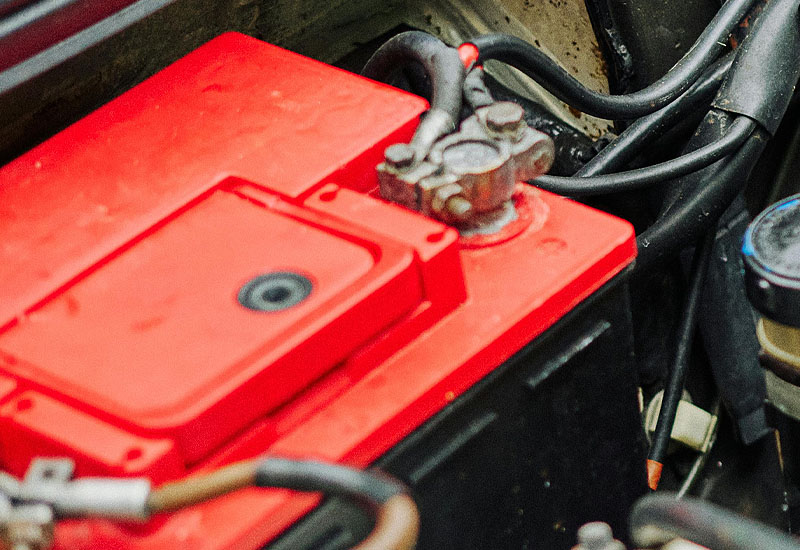Ever wondered how many amps a 12-volt car battery has? If you’re like most people, you’ve probably heard a lot about car batteries but aren’t sure exactly what makes them tick. Don’t worry, you’re not alone! In this guide, we’ll break down everything you need to know about the amps in a 12-volt car battery. From understanding the basics to knowing how amps play a role in your car’s performance, we’ve got you covered. So, let’s dive in and make things clear!

What Is A 12-Volt Car Battery?
A 12-volt car battery is a vital component in every vehicle, supplying the power necessary to start the engine and run various electrical systems in your car. These systems include lights, radios, and air conditioning. But what does the “12-volt” part really mean? Simply put, it refers to the battery’s voltage level, which is the force that pushes the electrical current through circuits.
When it comes to amps, this is where things get a bit more detailed. While voltage determines the “pressure” behind the electricity, amps (or amperes) measure how much electrical current flows through the system. So, how does this affect your car? In short, the number of amps your car battery provides determines how much power it can deliver to start your engine and operate those essential systems.
The main difference between the volts and amps is like comparing water pressure to the amount of water flowing through a pipe. The voltage is the pressure that pushes, and the amps are the amount of electricity that flows. For most cars, the standard 12-volt battery provides enough power to meet the needs of the electrical systems, but how many amps does it actually supply?
What Is The Average Amp Rating of A 12 Volt Car Battery?
Now that you know the basics of how a 12-volt car battery works, let’s dive deeper into how many amps it usually provides. While there’s no one-size-fits-all answer, the typical 12-volt car battery can provide anywhere from 40 to 100 amp-hours (Ah). This is often referred to as the battery’s capacity, which is a measure of how long the battery can provide a certain amount of current.
For instance, a battery with a 60Ah rating means that it could theoretically supply 60 amps of current for one hour before being drained. Or, it could supply 1 amp for 60 hours. The important thing to know is that the higher the amp rating, the more power the battery can deliver over time.
But there’s more to consider than just the amp rating. Batteries also have something called a “cold cranking amps” (CCA) rating. This refers to how much current the battery can deliver in a short burst, typically at low temperatures, to start your car. A higher CCA rating means that the battery can start the engine more easily, even in cold weather.
The average car battery generally falls within a range of 500 to 800 cold cranking amps (CCA), though this can vary depending on the type of vehicle, the climate, and the size of the battery. For example, larger vehicles like trucks and SUVs often require batteries with higher CCA ratings.
Now, you might be wondering why these numbers matter to you. Simply put, they tell you how well your battery will perform, especially when you need it most—when starting your car in the morning or powering essential accessories. If your battery’s CCA rating is too low, you may find it struggling to start your engine, particularly in colder temperatures. So, understanding the amp rating helps ensure your battery is up to the task!
Factors That Affect The Amps in A 12 Volt Car Battery
Understanding how many amps a 12-volt car battery can provide is essential, but there are several factors that can affect this number. Let’s take a closer look at these factors and how they influence your battery’s performance.
Battery Size
First off, the size of the battery matters. Larger batteries, which are typically used in trucks or high-performance vehicles, can provide higher amp ratings. These batteries are designed to support more demanding systems, such as heavy-duty engines, larger electrical systems, or additional accessories like winches and auxiliary lighting.
In contrast, smaller cars with less demanding electrical systems usually come with smaller batteries, which have lower amp ratings. When buying a replacement battery, it’s essential to choose one that matches the size and power requirements of your vehicle.
Battery Age and Condition
The age of your car battery plays a huge role in how well it performs. Over time, all batteries lose their capacity to hold charge, meaning the amp-hours rating will gradually decrease. A new car battery will have a much higher amp-hour capacity than an older one, which is why you might notice that your car has trouble starting after several years.
If you’ve had your battery for a few years, it’s a good idea to check its health regularly. A battery that is nearing the end of its life will not be able to supply the same amount of amps as it did when it was new. Many auto parts stores offer free battery tests to see how well it’s holding up.
Temperature and Weather Conditions
The temperature outside can have a major impact on your battery’s performance. Cold weather, in particular, can reduce the number of amps a battery can provide. This happens because the chemical reactions inside the battery slow down in colder temperatures, making it harder for the battery to deliver power. In freezing weather, your car’s battery may struggle to provide enough cranking amps to start the engine.
This is why having a battery with a higher cold cranking amp (CCA) rating is essential for those living in colder climates. On the flip side, extremely hot weather can also affect your battery, causing it to degrade faster and lose its ability to deliver power over time.
Electrical Load in Your Car
The number of electrical devices and accessories in your car also affects the amps your battery will provide. If you have multiple devices running, such as heated seats, a powerful sound system, or aftermarket lighting, your battery has to work harder to keep everything running smoothly. This will cause it to drain faster, reducing the overall amps available for starting the engine and other critical systems.
If you notice that your battery is draining quickly or your car is struggling to start, it might be worth considering whether your electrical load is too high for the current battery. Adding more electrical accessories than your battery is designed to handle can cause long-term issues.
Battery Type
Not all car batteries are created equal, and different types of batteries have different amp ratings. The two main types of car batteries are lead-acid batteries and absorbed glass mat (AGM) batteries.
- Lead-acid batteries are the most common and are typically cheaper, but they don’t have as much capacity or as long a lifespan as AGM batteries.
- AGM batteries, on the other hand, are more expensive but provide better performance, especially in terms of amps and durability. They are designed to handle higher electrical loads, making them a great choice for vehicles with lots of electrical accessories or those used in extreme conditions.
Battery Maintenance
Taking care of your battery is crucial if you want it to perform well. Regular maintenance, such as cleaning the terminals, ensuring the battery is properly charged, and checking for any corrosion, can help maintain the battery’s ability to provide the necessary amps. A battery that is poorly maintained may not provide the amps required to start your car or run its electrical systems efficiently.
I hope this article helped you understand how many amps a 12-volt car battery has and what factors can affect its performance. Remember, knowing the amp rating of your battery can help you choose the right one for your car and keep it running smoothly for years to come.
Frequently Asked Questions
Is it possible to increase the amps in a 12-volt car battery?
While you can’t increase the amps in a 12-volt battery by itself, you can choose a battery with a higher amp rating when replacing it. Additionally, certain battery maintenance practices can help maintain optimal performance.
Can a car battery have too many amps?
No, a car battery cannot have “too many” amps. However, it’s important to choose a battery with the correct rating for your car. A higher amp rating can be useful for vehicles with heavy electrical loads.
Do I need to worry about the amp rating for my car battery?
Yes, the amp rating matters because it indicates how much power your battery can provide. Choosing the right amp rating ensures your battery can handle the electrical demands of your vehicle.
Can a low amp battery cause problems?
Yes, if your battery has a low amp rating or if it’s losing its capacity, it can cause problems such as difficulty starting the car, electrical malfunctions, or even a complete failure to start the engine.
Is it necessary to buy a battery with high cold cranking amps?
If you live in a cold climate, it’s a good idea to choose a battery with a higher cold cranking amps (CCA) rating. This ensures your battery can start the engine even in freezing temperatures.
Can I use a higher amp battery than recommended for my car?
Using a battery with a higher amp rating than what’s recommended for your car is generally safe. However, make sure the physical size of the battery fits your vehicle and that it meets other requirements.
Do I need to replace my battery if the amps are low?
If your battery’s amp rating has dropped significantly due to age or wear, it may be time to replace it. A new battery will help ensure your car starts easily and all electrical systems run smoothly.
Can I use a battery charger to boost the amps in my battery?
A charger can help replenish a low battery’s charge, but it won’t increase the battery’s amp rating. If your battery is losing capacity, it might be time for a replacement.


